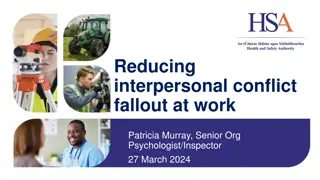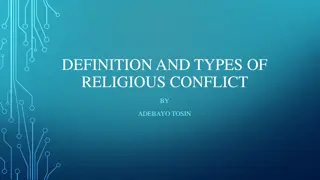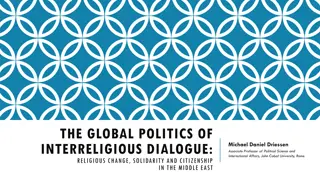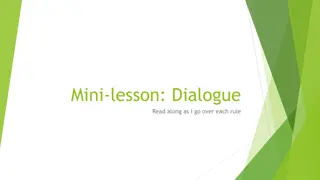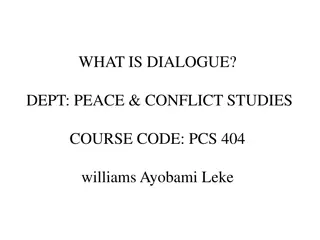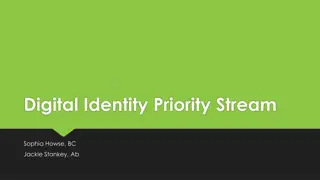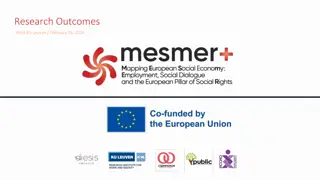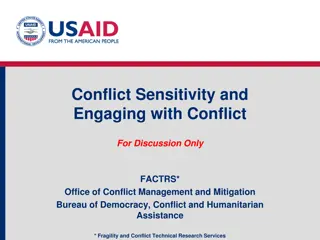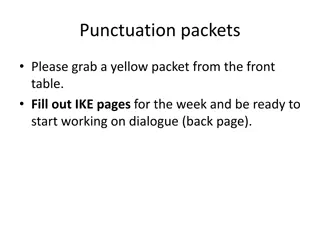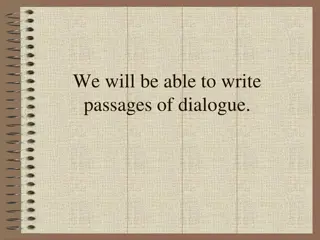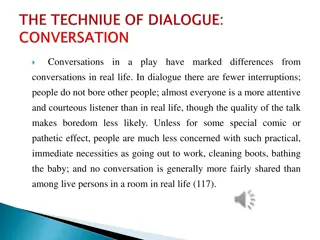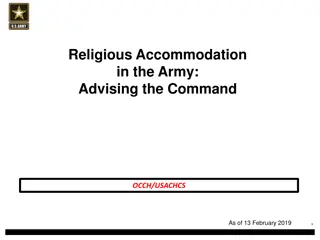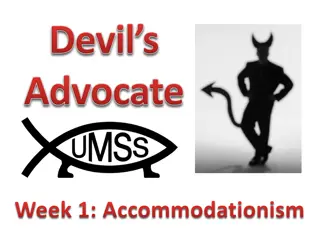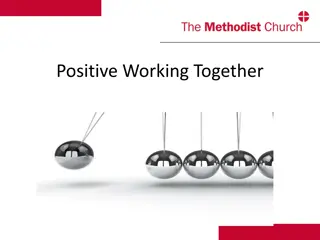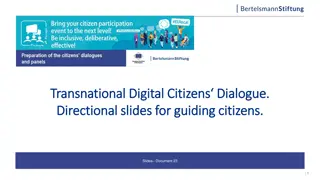Exploring Dialogue, Identity, and Conflict Transformation in Religious Settings
This retreat program at the Boston Theological Institute delves into the power of dialogue, identity, and conflict resolution within the realm of religion. Participants engage in exercises, discussions, and reflections aimed at fostering understanding, empathy, and effective communication. The core premises emphasized include the importance of community, relationships, and quality conversations in driving positive change. Various topics such as emotional dysregulation and defensive responses are also explored to enhance conflict transformation skills in religious settings.
Download Presentation

Please find below an Image/Link to download the presentation.
The content on the website is provided AS IS for your information and personal use only. It may not be sold, licensed, or shared on other websites without obtaining consent from the author. Download presentation by click this link. If you encounter any issues during the download, it is possible that the publisher has removed the file from their server.
E N D
Presentation Transcript
Dialogue Retreat Boston Theological Institute Religion and Conflict Transformation Program Robert Stains Public Conversations Project
Today Welcome, intro to day and dialogue Exercise: Beginnings Sharing objects Exercise: Questions for persuading or eliciting Presentation: Identity, threat, inquiry and dialogue Exercise: Questions in service of the asked Lunch Preparatory interviews Dialogue practice and debrief; Q and A Closing
Beginning questions In Pairs: 1. What is something of interest to you, or that energizes you, that others here might not know about you? 2. What expertise or life experience are you bringing with you today that might be useful for others to know?
Questions for beginnings Evoke curiosity Invite personal connection Elicit competence Reduce anxiety Raise energy Get the body involved
Object and what it represents about your faith path Speak for up to one (1) minute Person to speaker s left times with watch Pass watch to speaker when time ends Pause a beat between speakers And so on around the circle No commenting on others speaking At conclusion, place your object on the table if you wish to
Core Premises We need community to get things done We need relationships to create and maintain community We need conversation to create and maintain relationships The quality of conversation drives the quality of relationship Stuck , destructive conversations have self-sustaining properties. Relationships shift when the content and process of conversations shift.
Emotional Dysregulation Triggering Patterns/cycles Vigilance Attack/Defend
Cycle of Defensive Response Attack/ Defend Trigger Vigilanc e Vigilanc e Attack/ Defend Trigger
What Helps Mindsight (Siegel) Reflection, Attention, Intention Prevent destructive loops via preparation and structure Invite and amplify positive deviations Develop Islands of Reflection Shape conversational environments Notice, name, discern, choose Inquiry
Dialogue Purpose: better communication for mutual understanding. Not: debate; problem-solving; education Effected by: Reflection on one s own and others perspectives Shared agreements that guide the conversation Structured exchanges that prevent old patterns and enhance speaking and listening Opportunity to explore genuine interest in the other
Questions for Persuasion or Understanding Pair up Round one: Speaker 1: something you believe is true: one sentence Asker: ask questions to persuade the speaker otherwise (2 min.) Switch roles and repeat with Speaker 2
Round Two Speaker One: say something you believe is true again Asker: ask questions to understand speaker s perspective, thinking, feeling, choosing, etc. 2 Min. Switch roles and repeat with Speaker 2 Return to circle
Debrief What was going on for you as asker or listener- in each condition: persuasion and understanding? What did each kind of asking evoke? Was there a question that stood out as particularly useful?
Keep in mind Intention and Impact: Mind the gap Attention gives life Potentially problematic questions: Attributive Problem and past-focused Knowing, distant, instructive Rhetorical or pseudo Why? questions
16 Questions to shift conversation In advance; to prepare to bring best self To help notice what goes unnoticed/unrecognized: meanings, capacities, personal and shared history, choices To develop fresh perspectives: time, value, relationship Elicit hope not fear
Questions and Contexts Before a first session Between sessions Questions to all in a group Questions to individuals alone and together Questions parties ask one another Asynchronous questions
Questions to advance reflection History and context Hopes and concerns Effects of conflict Positive experiences Ideas for change
Questions in service of the asked By yourself: a dilemma Headline, if you wish; state the dilemma Why it s a dilemma for you Minimum essential facts Specific example Groups of 4 Time-keeper
In your groups Speaker speaks: 3 min. Headline, if you wish; state the dilemma Why it s a dilemma for you Minimum essential facts Specific example Listeners ask, scribe writes: 3 min. Speaker tells effects of questions: 3 min. Repeat X3 Debrief as group: 5 min. Return to circle
Process Purpose People Prevent Promote Prepare Plan
22 Preparation Planning Worksheet Individual Interpersonal Tools Prevent Promote
Creating the space for dialogue Pre-meeting connection Pre-dialogue meal Seating: circle, pro/con Agreements Questions to all Responses within a structure Questions of one another Questions to close and transition


